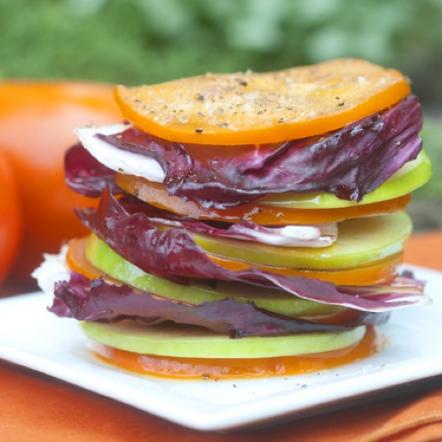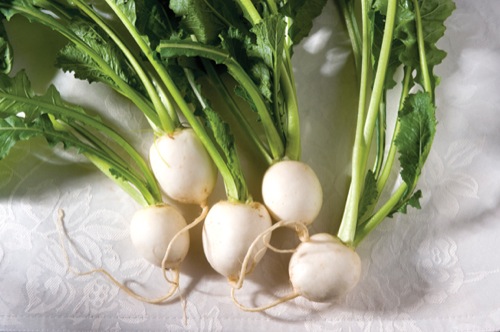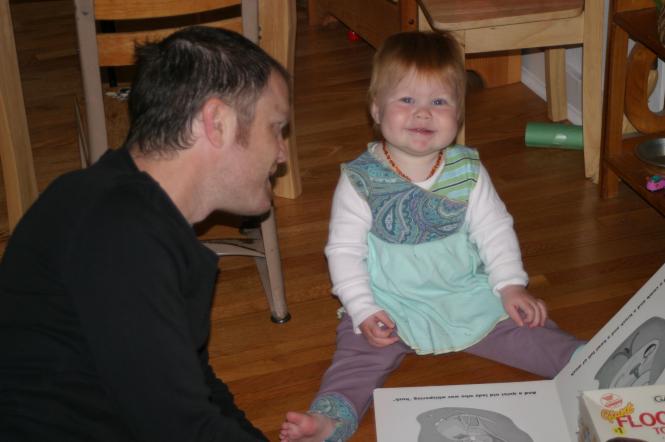At first glance, Ripe may look like just another cookbook. All you have to do is open it up to see the difference. This book is alive with color and for me is very evocative and strangely alluring. I wanted to dive in, to read, to go shop for food and, well, maybe to cook (actually, I just wanted to eat). So, in short, look at this book and then go out to eat. Ok, perhaps that's a little shallow.
Digging into cookbooks can often reveal more surface than substance. It never fails that you fall for the pretty pictures and forget to think about whether the recipes are any good or even work. Ripe obviously delivers something powerful to our senses, and so far, seems to deliver on substance. Not only does author Cheryl Sternman Rule provide us with stories written with a healthy amount of humor and wit (and sometimes just plain silliness), but the recipes also seem written by someone who wants them to be successful and understood. They are specific, yet accessible.
Before I share my experiences with the recipes, let me back up a bit and tell you about the book. It is unique in the fact that it is organized by color, six color categories to be exact: red, orange, yellow, green, blue & purple, and white. Because of this, readers are treated to a different type of experience. For me, that experience is one of desire and intrigue. Paulette Phlipot's photography is perfect and I am pulled in to simply want to read through the book and gaze at it. It is an interesting blend of coffee-table-art-book and useful-inspirational-tool. The actual act of finding a recipe often doesn't come into play. Yes, I do want to try everything in the book (hello Apricot frangipane galette), but more importantly, I want to marvel at the pictures and read the humorous little anecdotes that introduce each fruit or veggie.
 Persimmon stack with radicchio and green apples
Persimmon stack with radicchio and green apples
After the pleasure reading, I actually then do want to go out and buy food. Not just any food, but fresh, colorful, and (duh!) ripe food. The concept seems almost childishly simple, to showcase fruits and veggies simply and beautifully, but I don't see it being done elsewhere...and it works. For example, I absolutely love nectarines and buy one now and then but when I see them on the "Nectarine crepe stack" I just about run out the door to get some, now. It worked with persimmons too, another fruit in the "orange" section, and one that I seldom eat. Gaze at them beautifully piled up with green apples and radicchio and I guarantee that one will find its way into your cart the next time you are at the market.
Organizing a cookbook by color is a bit strange in terms of navigation. You end up with red pepper chili next to rhubarb cherry crisp. The watermelon slushy follows the open-faced smoky tomato grilled cheese. This might irk some of you more organized folks out there, but for me, I am not at all bothered. When I go for a cookbook, it is almost always for inspiration, more than for a specific type of recipe. It really helps when I am planning the weekly menu with my wife and we see tuna melt on the list again. Don't get me wrong, tuna melts have saved many an evening when we are exhausted and time is short. But, sometimes we are just lazy or uninspired and odds are if we gazed into Ripe and saw the "Fried sage and chestnut brussel sprouts" or "Ginger cashew cauliflower," those tuna melts might just get put off until next week.
 Turnips, from the White section
Turnips, from the White section
It is perhaps even a better book for hors d'ouerves and snacks than anything else. There is the "Jicama with a peanut sriracha dip," "Roasted garlic white bean dip" and "Gremolada fingerlings" in the "white" section which all seem ready for a Saturday afternoon get together. To make things even more tempting, there is a small section with each fruit or vegetable that suggest a few simple uses.
Papaya, in the "orange" section has the following for its simple uses:
dessert = ripe papaya + coconut ice cream
snack = roasted papaya + lime + salt + chili powder
fruit salad = papaya + honeydew + cantaloupe + mango + pineapple
My first try at one of the recipes was the "Green noodle soup with Kale, beans and parmesan crisps." Right away, it was clear that this book is very accessible. There are some tips about how to use and prepare kale. The recipe is simple, which I love. It makes it more available to all types of cooks and gives the more advanced something to build on. In the end, the soup turned out quite tasty…the real test of a recipe working for a cook.
The second recipe we were tempted by was in the "blue and purple" section: "Eggplant romesco rigatoni." This is an extremely flavorful roasted sauce with nuts and toasted bread. It is simple in theory, but in the end, we always find our kitchen to be a bit of a disaster after all of that roasting, toasting and blending. But, yes, we will make it again. It is just such a good sauce, not only for pasta, but if you make extra, it is great on toasted bread and sandwiches.
Here it is, with kind regards to author Cheryl Sternman Rule.
Eggplant Romesco Rigatoni
2 dried ancho or pasilla peppers
1 globe eggplant (about 1lb), chopped
2 med red bell peppers, chopped
1/2 medium red onion, quartered
2 garlic cloves, peeled
2 T + extra virgin olive oil
Salt and pepper
1 (14.5 oz) can whole peeled tomatoes
1/3 c whole almonds
1 slice sourdough bread
1/2 c Italian parsley, minced
1 lb freshly cooked rigatoni &
1/2 cup pasta water
Preheat oven to 400.
Set the dried chiles in a bowl and add boiling water to cover.
Place eggplant, bell peppers, onion and garlic on a rimmed baking sheet. Mix with olive oil, salt and pepper. Rub seasonings in with your fingers and spread the vegetables out evenly on sheet.
Place tomatoes and juices in a baking dish. Roast tomatoes and above veggies for about 30 minutes, stirring a couple of times in the process. Eggplant and peppers should be slightly browned.
Reduce oven to 350.
While veggies cool, brush the bread with olive oil and place on a baking sheet. Place almonds on the same baking sheet and toast in the oven for about 8 minutes, flipping the bread half way through. Break the bread into pieces.
Drain, stem, seed and roughly chop soaking chiles. Place everything in food processor fitted with a metal blade. Process until smooth.
Add a bit of pasta water to sauce to thin if desired. Serve with hot rigatoni, garnished with parsley and a drizzle of olive oil (I also added a nice helping of parmesan to mine).
As I mentioned earlier, this sauce was great for snacking and making fancy appetizers. It was also great spread on a sandwich or bagel as it can be quite thick, so if you thin it out for pasta sauce, don't thin all of it out…only what you will use.
Enjoy!
For more information about this book, go to:
Photos are from the book, originals by Paulette Phlipot.

Lawrence Black is a writer and editor at Simple, Good, and Tasty. He has two kids and loves gardening and eating with them. His last article about kids and gardening was: Hey boy, don't eat all the rhubarb. His last cookbook review was for The Farmstead Chef. He can be reached at lawrence@simplegoodandtasty.com.




